Precision pays: aligning rotating machinery for efficiency and longevity
Partner Content produced by KHL Content Studio
June 10, 2025
In almost every heavy industry, you will find rotating machinery. You could say that rotating machinery makes the industrial world go round. Unless, of course, it doesn’t.
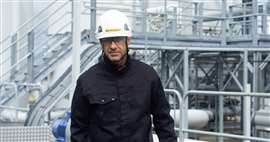 Easy-Laser’s Roman Megela
Easy-Laser’s Roman Megela
When rotating machines go awry, it can be nothing less than catastrophic. At the very least, when there is misalignment, the result is unwanted heat, noise and vibration, as well as an increase in fuel usage, a shortening of the lifespan of components and potentially the need to shut down operations and replace or repair key mechanisms.
As a snapshot, rotating machines that need precise alignment to function optimally include crankshafts and camshafts within internal combustion engines, pumps, compressors and centrifuges in the process industry, wind turbines in the renewable energy industry, and an enormous variety of machines within the automotive, marine and manufacturing sectors.
The business case for ensuring optimum operational levels is crystal clear, yet even businesses with many years’ experience using rotating machinery will sometimes cut corners – and almost always to their cost.
Prioritising productivity
Given the high level of engineering built into modern industrial equipment, productivity gains have tended to become increasingly incremental, with far fewer opportunities for innovative leaps forward.
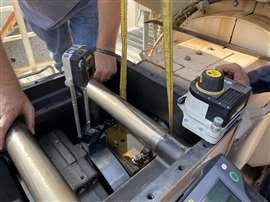 Measuring main bearing clearance
Measuring main bearing clearance
With this in mind, operational methodologies are now under closer scrutiny, with best practice being the primary focus of efforts to extend service intervals and maximise machine uptime.
Roman Megela is the senior reliability engineer with Easy-Laser, a company that produces laser-based alignment solutions for rotating machines across a variety of industries.
He is very clear – not to say evangelical – about the importance of maintaining alignment within these machines.
“In the case of machine installation,” he says, “it is crucial that the machine is installed on a flat and levelled foundation. It is a must to measure and verify the foundation to avoid distortion of the machine’s casing.
“If this is not addressed during the commissioning phase, the machine’s operational life will be reduced, by perhaps as much as 50%, from the very start. Also, at some point, misalignment will cause the machine to fail and it will need to be repaired, with the additional expense of technicians having to re-install it.”
Precision in compression
One area in which Megela is seeing an increasing need for both improved performance and greater machine lifespan is compressed gas systems; in particular reciprocating compressors.
When it comes to maximising their performance, he says, “precision is key – especially during the setup phase.”
Manufacturers generally provide strict guidelines on how reciprocating compressors should be aligned and checked, and Megela says this is where laser measurement tools really come into their own, being able to take care of perhaps 90% of the required checks.
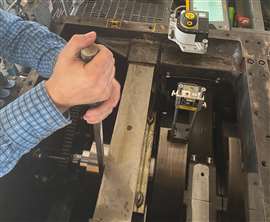 Checking crankshaft thrust
Checking crankshaft thrust
“That includes everything from making sure the foundations and base plates are flat and level, to checking for soft foot, aligning the shaft between the driver and compressor, and verifying internal alignment like bearing clearances and thrust settings,” he says.
On top of that, he says, dynamic checks can be made, including tests for thermal expansion and pipe strain, “because over time, those can significantly affect performance.
“Ideally, it should all be done with one system, ensuring the process remains consistent. And it’s not just a one-time thing. After installation, you need to recheck everything regularly to make sure the machine keeps running the way it should.”
Stability means sustainability
Megela is a great believer in prevention being better than cure and he travels the world, explaining to engineers and technicians that the correct alignment of machinery could literally add years to its lifespan, benefitting not only the company’s bottom line, but potentially the planet too.
He explains that, in the last five years, the industry has changed dramatically in the face of a number of different challenges, “from Covid, through components shortage, then energy prices going through the roof.
“If you add the cost of downtime, which includes loss of production, plus maintenance costs, it makes it very difficult for a business to have money to invest in new assets.
“Every organisation I speak to is trying to become more efficient and sustainable, utilising their available resources.
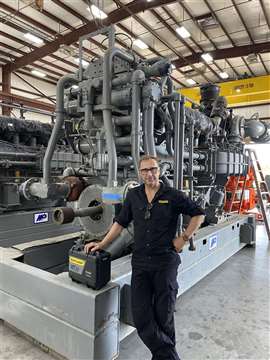 Roman Megela says that, with the right practices, you can potentially extend the life of your machine by as much as ten times
Roman Megela says that, with the right practices, you can potentially extend the life of your machine by as much as ten times
“It’s true that every machine has to be overhauled at some point, but this should as much as possible be a planned event, not due to failure.
“If you can manage this, you can potentially extend the life of your machine by ten times – then you’ve opened the door to serious sustainability.”
In fact, Megela sees it very much as being at the heart of his role, to educate industry professionals about the benefits of greener operations.
“Sustainable practices will help to cut down maintenance costs and keep machines running,” he explains. “That translates into reliable operation which can also have a major impact on the return on a company’s investment.”
This seems to be common sense, but Megela says he has visited companies for whom components that should last for a number of years, are regularly being replaced within 12 months, due more often than not to a failure to check alignment.
The result is unplanned downtime for machinery, and potentially the need to bring technicians in to carry out unplanned maintenance. If the machine happens to be on a ship, or an offshore oil rig, transportation and travel costs can rise exponentially.
An all-industry issue
On the complexity of some of the maintenance and repair processes, Megela says, “It’s always time-consuming to stop production, drain and purge systems, log out and tag out machines.”
He adds that, due to the complexity of their processes, businesses within the refining, chemical, petrochemical and energy production industries are likely to suffer the most when misalignment strikes.
“It needs to be understood that alignment is a condition, not a task,” he says. “Keeping the alignment condition within the tolerances is the key to maximising your overall uptime.
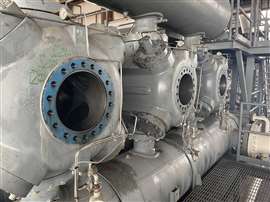 Laser technology can also verify the roundness of bores
Laser technology can also verify the roundness of bores
“And the benefits of alignment are huge. Bearings will operate under designed loads, lubrication will remain unchanged, no strain will be added to the shafts, mechanical seals and couplings.”
Megela says some of the companies he visits are surprised at how regularly checks on alignment are required.
He says, “We should check the alignment after the installation every three months. Only after nine months of repeating solid values should we start extending verification periods to up to two years.
“In this way, the life of a machine can be significantly extended, with the potential for huge long-term financial benefits.
Regular inspections of equipment will almost certainly identify a problem, as rotating machines will immediately respond to misalignment, with increased vibration, temperature, energy consumption and noise, and potentially leaking seals and compression capacity drop.
“When misalignment is identified, a plan for correction must be presented and acted upon, before there is potentially a catastrophic failure of the asset.
“Cutting corners at this point is always disastrous; there is nothing more economical than a perfectly aligned machine.
“The result is a long service life and minimal component wear and tear; that means a saving on replacement parts – a saving on natural resources, as well as the consumption of less energy.
“This is one of the ways we ensure industry becomes more sustainable.”
About Easy-Laser
Based in Mölndal, Sweden, Easy-Laser manufactures and supplies laser measurement and alignment systems for all industries.
Using the latest laser technology, the company facilitates the measurement of shafts, belts, bores and more, as well as service and calibration support and technical training.
Along with its range of products and services, one of Easy-Laser’s unique selling points is its longevity, with over 30 years’ experience in the laser technology market.
The company also benefits from a track record of combining engineering know-how with technological research and development, allowing it to create custom measurement systems to solve any size or complexity of measurement requirement.
--------
This article was produced by KHL’s Content Studio, in collaboration with experts from Easy-Laser
--------
All images courtesy of Easy-Laser
--------



